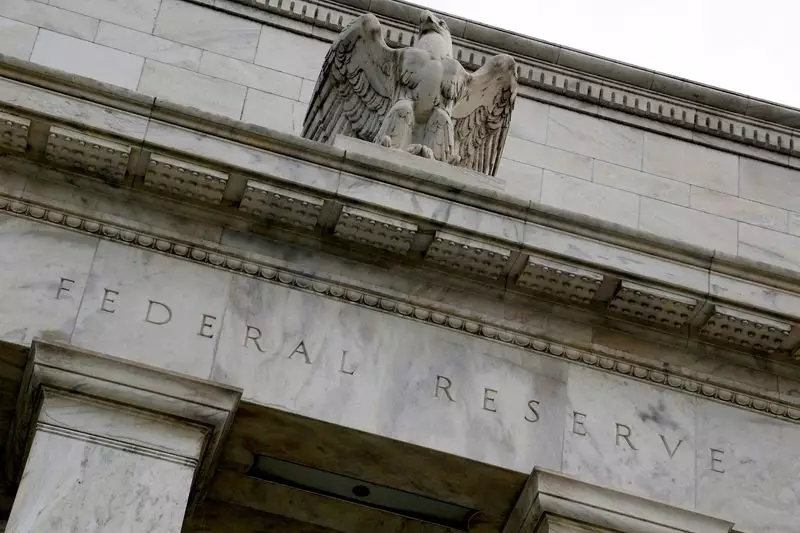The U.S. Federal Reserve has been facing a significant shift in its interest-rate-setting committee, with 2024 voting members leaning slightly more hawkish compared to their predecessors from 2023. However, this does not necessarily indicate a deviation from the anticipated pivot to interest-rate cuts in the coming year. In fact, as inflation shows signs of falling at a faster rate than expected, analysts argue that Federal Reserve policymakers may want to reduce rates even more than initially projected. This change in perspective is supported by the recent release of the personal consumption expenditures price index, the Federal Reserve’s preferred measure of inflation, which indicated that both headline and core measures have cooled more than anticipated. As a result, the outlook for the Federal Reserve’s interest-rate cuts remains unchanged.
Throughout the second half of the year, the Federal Reserve’s policymaking table has witnessed a notable shift towards dovishness. This transition can be attributed to accumulating evidence of easing price pressures and a cooling labor market in response to the Federal Reserve’s previous rate hikes. Even policymakers who were initially inclined towards a more hawkish approach, like Fed Governor Christopher Waller, have backed away from their previous stance on rate hikes. This change in sentiment among policymakers can be explained by the diminishing upside risks to inflation. As a result, the prospect of reducing rates more aggressively than initially anticipated has gained traction.
Following the decision to maintain rates at 5.25%-5.50%, Federal Reserve Chair Jerome Powell highlighted that the timing of rate cuts would be the next question. This announcement led to a significant decline in bond yields and the market’s expectation of rapid policy rate reductions commencing in March. Even if the rate cuts occur later and more gradually than anticipated, the overall direction of these bets reflects Powell’s adjusted tone. The reason behind Powell’s decision to set expectations for more than 75 basis points of rate cuts can be attributed to lower inflation filtering through the economy. As firms encounter greater difficulty raising prices next year, they may resort to reducing labor costs to maintain profitability. By signaling easier policy ahead, Powell aims to prevent such disinflationary dynamics from taking hold.
Another justification for rate cuts in the coming year is the impact of falling inflation on real borrowing costs. As inflation declines, maintaining the benchmark rate at its current level would drive up borrowing costs in real terms. To prevent excessive tightening, the Federal Reserve must adjust its policy rate. BMO economist Scott Anderson argues that any decision to ease policy more aggressively would be primarily driven by inflation rather than growth or unemployment. Therefore, the extent and timing of rate cuts will largely depend on inflation trends.
The upcoming year will witness a new group of Federal Reserve bank presidents taking turns voting on policy under the Fed’s rotation rules. Economists at Deutsche Bank, BMO, and other institutions believe that these incoming voters are likely to support fewer rate cuts compared to their predecessors. Raphael Bostic, the chief of the Atlanta Fed, may adopt a more dovish approach, emphasizing concerns about excessive job loss. However, he has also expressed his belief that the Fed policy rate should end next year in the range of 4.75%-5%. In contrast, most of his colleagues anticipate a lower range. The voting lineup is subject to change, and Fed policymakers’ views on rates evolve with the data. For example, Loretta Mester has recently appeared less certain about the need for further tightening. Ultimately, all 19 Fed policymakers, including non-voters, contribute to the policy debates that shape decision-making.
Various factors could potentially impede progress on inflation or even revert the current dovish bias. Prolonged disruptions to traffic through the Suez Canal resulting from militant attacks on ships in the Red Sea could drive up prices after a period of inflationary declines. An increase in consumer confidence might pave the way for stronger spending. Moreover, easier financial conditions, reflected in the decline of the 10-year yield, could stimulate borrowing and investment. Additionally, job growth exceeding expectations can play a vital role in shaping the Federal Reserve’s decision-making. While risks to inflation progress exist, it is likely that the Federal Reserve will not adjust policy in response to a temporary shock unless it is expected to persist long term. With the current high policy rate, weaker spending and job gains seem more probable for the coming year. Ultimately, the data itself holds greater significance than the rotating cast of Fed voters, supporting the majority’s expectation of three quarter-point rate cuts.


Leave a Reply